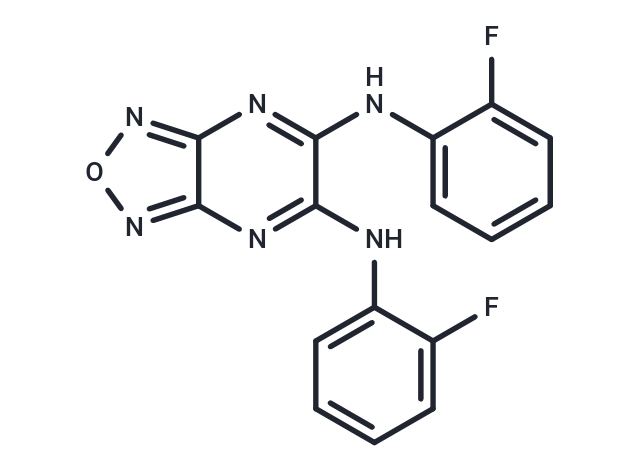Shopping Cart
- Remove All
 Your shopping cart is currently empty
Your shopping cart is currently empty

BAM 15 is an uncoupler of mitochondrial protonophore.

| Pack Size | Price | Availability | Quantity |
|---|---|---|---|
| 5 mg | $59 | In Stock | |
| 10 mg | $109 | In Stock | |
| 25 mg | $197 | In Stock | |
| 50 mg | $328 | In Stock | |
| 100 mg | $497 | In Stock | |
| 500 mg | $1,080 | In Stock | |
| 1 mL x 10 mM (in DMSO) | $66 | In Stock |
| Description | BAM 15 is an uncoupler of mitochondrial protonophore. |
| In vitro | BAM 15 effectively enhances mitochondrial respiration and oxygen consumption across a wide concentration range without increasing reactive oxygen species (ROS), displaying a broader range of action compared to FCCP in myoblasts and hepatocytes. Despite structural differences from FCCP, BAM 15 at concentrations between 100 nM and 1 μM increases the cellular oxygen consumption rate (OCR) similarly to FCCP, but at higher concentrations (1 μM to 50 μM), it sustains uncoupled respiration more effectively across various cell lines. Additionally, BAM 15 causes mitochondrial swelling, indicating its role as a protonophore, and demonstrates greater cell viability than FCCP when used up to 50 μM[1]. |
| In vivo | Animals that receive BAM 15 are protected from kidney injury compared to vehicle-treated mice, such as indicated by lower plasma creatinine levels at 24 and 48 h post-ischemia, reduced tubular necrosis, less obstruction of proximal tubules, less depletion of brush border villi, and less immune cell infiltration[1]. |
| Molecular Weight | 340.29 |
| Formula | C16H10F2N6O |
| Cas No. | 210302-17-3 |
| Smiles | Fc1ccccc1Nc1nc2nonc2nc1Nc1ccccc1F |
| Relative Density. | 1.548 g/cm3 (Predicted) |
| Storage | Powder: -20°C for 3 years | In solvent: -80°C for 1 year | Shipping with blue ice. | |||||||||||||||||||||||||
| Solubility Information | DMSO: 16.67 mg/mL (48.98 mM), Sonication is recommended. | |||||||||||||||||||||||||
Solution Preparation Table | ||||||||||||||||||||||||||
DMSO
| ||||||||||||||||||||||||||

Copyright © 2015-2024 TargetMol Chemicals Inc. All Rights Reserved.